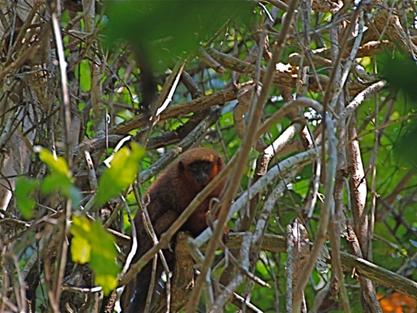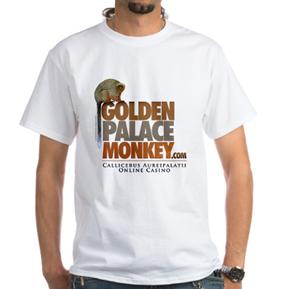his is a small primate, about 16 inches tall – but with striking coloration. They have orange-brown fur, a golden crown, a white tip on the tail, and dark red hands and feet. It also is known as the Madidi titi monkey, and is only found in Madidi National Park in Bolivia, which spans from the high peaks of the altipalano to the Amazon jungles and is revered as one of the most biologically diverse places on earth.
The golden palace monkey only just was discovered in 2004!!! This is quite remarkable – scientists are always running across new species of plants, insects, and even amphibians – but a vertebrate and a primate – and one about the size of a large rabbit? It was an incredible find. The titi are the only living members of this genus and of the subfamily Callicebinae – which also includes several extinct genera of monkeys.
Titis are diurnal (active during the day) and arboreal (live in the trees). Their tails are not prehensile so they cannot grasp with it – though it is a quite lovely reddish and furry one. Titis are athletic and jump from tree to tree, which earned them their German name – Springaffen – or jumping monkeys. They will sleep at night but also take a midday nap. They are territorial and live in family groups of parents and their offspring, usually with two to seven animals in a group. The adults mate for life and pairs often can be spotted sitting or sleeping with tails entwined (ahhhhh). A pair will maintain a territory against rivals primarily through persistent calling.
The male will carry the infants until they can take care of themselves, dropping them off to the mom for nursing. The young are weaned in about five months and are full grown in two years. They are primarily fruit eaters but their diet also includes leaves, flowers, insects, bird eggs, and small vertebrates. Not much is known about their life span – but similar species are thought to live up to 12 years in the wild – captive individuals have lived to 25 years. After three years titi monkeys will leave their group to find a mate. The golden palace monkey is found in floodplain and piedmont forests, often near water – which of course is pretty easy to find in the Amazon.

I took this photo in the park while my wife, Connie, and I were walking down a path back to camp after a morning of birding. Our guide stopped suddenly and whispered – “golden palace monkey” – he said it with a bit of reverence and excitement indicating it was something special. I had never even heard of this critter – we had seen four other species of monkeys over the past three days of which I’d been familiar. The pair sat 30 feet up a tree, close to one another, warily watching us. We stood watching them for five minutes before they had enough and wandered off.
When I got home I looked up the species. Our guide said it was a recently discovered species but that was all. Golden Palace — I was thinking maybe this is somehow linked to the Quechua/Aymara religion that worships Pachamamma, the earth/time mother. Ha! Not even close.
The species was discovered by biologists working for the Wildlife Conservation Society conducting biodiversity inventories of Madidi National Park. Typically a new species is named by the discoverer who picks a name that is descriptive of the animal or, if not humble, then him/herself. The WCS team decided to auction off the naming rights of the species to the highest bidder. The winner? The Golden Palace on-line casino (based in Canada), that apparently out bid Ellen DeGeneres, who, as best I can determine, donated a bunch of her outfits for auction with the proceeds to go towards this fund. So yes, the species name,ureipalatti, means Golden Palace. The winning bid – $650,000 will go to conservation efforts in Madidi National Park.
You can go to the casino website and find out the background and see a video of the critters calling – their noise is why the locals call the monkey “luca-luca” http://www.goldenpalacemonkey.com/
If interested you also can purchase t-shirts, mugs, hats, baby clothes, and even a thong with the golden monkey logo. http://www.cafepress.com/gpmonkey

While the site refers to it as the goldenpalace.com monkey – the common name is just Golden Palace Monkey. So, if you ever get down that way, keep your eye out for this one – but in full disclosure I did see this quote regarding a National Geographic photographer:
Editor’s note: Eight weeks after Sartore returned from a second trip to Bolivia, a wound on his lower right leg began to grow. He had contracted leishmaniasis – caused by a flesh-eating parasite – through the bite of a sand fly. The infection spread to his lymph system and created a hole in his leg the size of a silver dollar. The infection was eventually controlled by a combination of surgery and a 21-day treatment of an antimony compound. He’ll know in ten years if he’s fully cured.
We had to take off our long pants for one river crossing and just got chewed up by sand flies – yikes! There’s a few biting things down there – Connie earned a nickname – chigger girl – during our trip.
